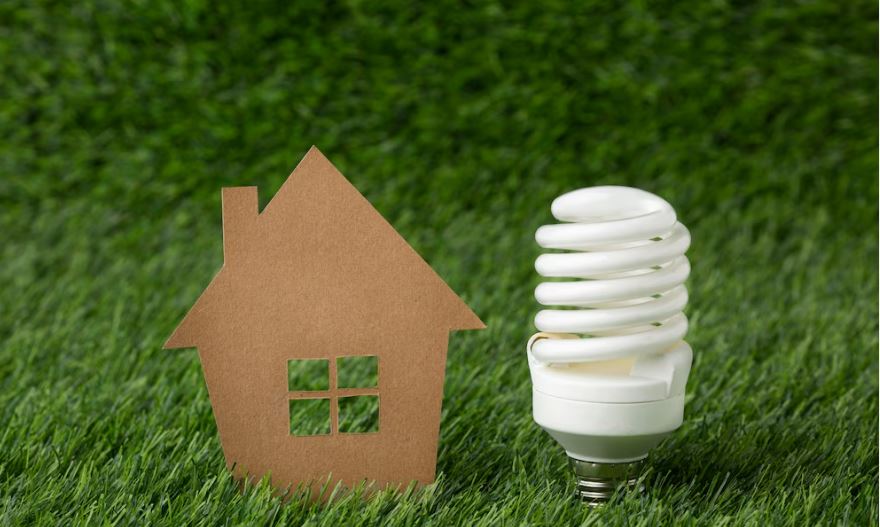Making the switch to LED lighting is a calculated move with noticeable effects, not just a contemporary aesthetic choice. British Gas claims that LED bulbs can live 25 times longer and use up to 80% less electricity than conventional incandescent lighting. Because of this, they are not only incredibly durable but also cost-effective. Faster, smarter, and incredibly efficient, the change is similar to how smartphones supplanted landlines. LED lighting adoption frequently results in a significant reduction in annual electricity expenditures for households, particularly when the entire house is converted. This change has even been made by well-known sustainability campaigners like Emma Watson, who combines eco-consciousness with stylish minimalism.
The silent saboteurs of energy conservation are devices that are left on standby. Energy experts refer to these items as “vampire devices” since they use electricity even when they are not in use. OVO Energy claims that an average household may save up to £80 a year by simply disconnecting or turning off these items, which include everything from microwaves and smart speakers to TVs and game consoles. Despite its apparent insignificance, this behavior is very advantageous when scaled. Users can better control their use by switching out conventional outlets with smart plugs or power strips. It’s a change that’s remarkably comparable to the transition from gasoline to hybrid vehicles: initially quiet, then all over.
5 Ways to Save Electricity at Home
| Method | Description | Estimated Annual Savings | Source |
|---|---|---|---|
| Switch to LED bulbs | Uses 80% less energy and lasts up to 25x longer than traditional incandescent lights | £40–£100 | British Gas |
| Unplug vampire devices | Stop standby power waste from appliances like smart TVs and speakers | £45–£80 | Energy Saving Trust |
| Install a smart meter | Monitors real-time energy usage to encourage mindful consumption | Variable | GOV.UK, OVO Energy |
| Buy energy-efficient appliances | Energy Star-rated fridges, washers, and dryers use far less electricity | £100–£300 | EnergySage, National Grid Group |
| Insulate your home | Keeps heat in during winter and out during summer, drastically cutting heating/cooling costs | £100–£600 | Energy Saving Trust |
Installing a smart meter gives households real-time access to their energy story. Smart meters reveal hidden consumption habits, much like wearable health monitors revolutionized the way we measure fitness. Homeowners are empowered to reevaluate their practices when they can detect energy-wasting appliances or peak use periods. Smart meters are being positioned as instruments for national transformation by the UK government, which is still offering incentives for this reform. Their extensive implementation portends a time when energy use will be perceived as an incredibly clear efficiency blueprint rather than a matter of guesswork.
Insulation continues to be the undisputed leader in energy reduction for heating and cooling. The Energy Saving Trust claims that, especially in older homes, adequately insulating cavities, lofts, and floors can lower heating costs by up to 30%. Reclaiming money that would otherwise disappear is the goal of this update, which goes beyond comfort. Ed Sheeran is among the many well-known people who have made investments in modern eco-homes with state-of-the-art insulation. Practicality—a modern improvement with traditional financial sensibility—is what is driving the trend rather than pure vanity.

It’s also been incredibly successful to replace old appliances with more energy-efficient ones. Dishwashers, refrigerators, and washing machines with Energy Star ratings frequently use half as much electricity as their older counterparts. These gadgets, according to OVO Energy, not only cut costs but also lessen your carbon footprint. It’s essentially the same as using a Prius in your kitchen. According to reports, celebrities like Leonardo DiCaprio, who has long been linked to eco-conscious living, have made comparable changes in their homes, demonstrating that living green is a lifestyle choice as well as a responsibility.
Although those are the five main strategies, performance can be greatly enhanced by auxiliary strategies. If widely implemented, lowering the flow temperature of your combi boiler to 60°C, as recommended by Nesta’s Money Saving Boiler Challenge, could save the UK £1 billion. A culture of efficiency can also be fostered by implementing everyday routines, such as air drying rather than tumble drying, washing clothes at 30°C, or cooking using pot lids. These insignificant actions reflect the compounding effect of investing, which is minor at initially but grows exponentially over time.
It’s interesting to note that commercial tech firms and the UK government have started incorporating conservation recommendations into smart assistants like Alexa from Amazon. Users can get personalized advice depending on their house size, device usage, and weather patterns with just a voice command. This integration represents a paradigm shift, where conserving electricity becomes as ingrained in our daily lives as asking for the weather or the time. It appeals to a generation that was brought up with digital responsiveness and is incredibly effective and intuitive.
From a sociological perspective, these changes are redefining expectations of household life rather than only being practical strategies. Energy efficiency is no longer the exception but the rule. Similar to how they used to ask about broadband speed or accessibility to transportation, homebuyers are now more interested in smart device integration and insulation quality. A smart-metered, LED-lit, well-insulated home is not only desirable, but essential in this changing environment.
The discussion of electricity has evolved culturally. It is now a part of a larger story about sustainability, health, and financial wellness rather than just a dull energy bill to dread every month. Energy-efficient buildings express ideals, just like organic food or hybrid cars do. These values are especially appealing to Gen Z and Millennials, who are outspoken about climate change and economic resiliency. Household energy use has changed over the last ten years from being a static indicator to a dynamic representation of lifestyle decisions.
According to this perspective, the five fundamental adjustments—insulation, smart metering, LED lighting, unplugging vampire gadgets, and energy-efficient appliances—are more than just advice. They are part of a broader movement that aims to achieve energy sovereignty. People can actively participate in a national and even international effort to lessen energy strain and alleviate the impact of climate change by putting even a few of these methods into practice. The shift may begin subtly with a plug or lightbulb, but it has profound impact on ecosystems and economies.
